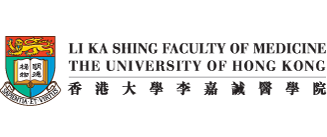Home > Chapters
Chapters
Part VIII: Other issues
8.2 Tips on laboratory diagnostic tests
8.2.1 Urinary Legionella antigen test (UAT)
- The majority of Legionnaires’ disease (LD) is caused by Legionella pneumophila serogroup 1 (524). The test kit most commonly used in HA hospitals detects L. pneumophila serogroup 1 ONLY (Table 8.4).
- Most of the HA hospitals offering this test can guarantee a turnaround time of 1 day (525).
- Although more than 80% of patients with LD excrete antigens in urine during day 1 to 3 of symptoms (524), the UAT can remain negative in the first 5 days of the illness. Therefore a negative UAT during the early phase of illness does not exclude LD, and UAT should be repeated (526).
- The UAT of majority of LD patients will turn negative within 60 days (524). However, the longest documented duration of antigen excretion was 326 days (527). Therefore a positive UAT can indicate either current or past infection.
- Pneumonia caused by Streptococcus pneumoniae and urinary tract infection caused by E. coli and Staphylococcus aureus can result in false positive UAT (very weak band after 15 minutes). The specificity is around 97.1%. If very weak bands in the first 15 minutes are discounted and re-examined after 45 minutes to look for increased band intensity, the specificity can increase to 100% as false positive bands would not intensify (528). Other causes of false positivity include rheumatoid-like factors, freeze-thawing of urine, and excessive urinary sediments (527).
- The sensitivity of UAT is variable, ranging from 70% to 80% (527). A Spanish group evaluated the sensitivity of the test during a large Legionella outbreak in Spain. They found that severe LD had a higher sensitivity (>80%) (529). Therefore, a negative UAT in a patient with mild atypical pneumonia does not exclude the diagnosis of LD. Other laboratory investigations for diagnosing LD should be performed (paired serology, culture with buffered charcoal yeast extract BCYE agar ± supplements and PCR of lower respiratory tract specimens).
Table 8.4 Key points in the use of UAT
| 1. | Can detect L. pneumophila serogroup 1 ONLY. |
| 2. | Short turnaround time (within 1 day). |
| 3. | UAT can be negative within the first 5 days. |
| 4. | A positive UAT result usually turns negative within 60 days. |
| 5. | Sensitivity: 70–80% Specificity: approaches 100% |
| 6. | Negative UAT does not exclude LD |
| 7. | False positive UAT:
|
8.2.2 Diagnosis of catheter-associated bloodstream infection (CABSI)
- The presence of bacteria in the blood stream is detected by the continuous-monitoring blood culture system in HA hospitals. The automatic device continuously measures the metabolic product produced by microorganisms. When a certain cutoff value is reached, the monitoring machine would indicate positivity of the blood culture bottle of interest, where the bottle would then be removed and subcultured. The time to positivity (TTP) would be affected by the initial bacterial inoculum, i.e. the higher the inoculum, the shorter the TTP (530–531).
- In vitro studies have noted a linear relationship between the bacterial inoculum size and TTP of blood culture (532). The TTP in patients with bacteraemia is variable, ranging from <7 hours to >20 hours, depending on the infecting organism and severity of the disease (Table 8.5).
- The differential time to positivity is a reliable and simple technique to diagnose CABSI without the need for removal of the catheter (533). A high central to peripheral blood culture colony ratio is indicative of CABSI. When blood is drawn simultaneously from central venous catheter and peripheral, catheter blood culture positive 2 hours earlier than peripheral blood culture is highly indicative of CABSI (532,534). (Information of TTP can usually be obtained from the microbiology laboratory) (Table 8.6).
- In a meta-analysis, the sensitivity and specificity of differential time to positivity in diagnosing CABSI is 89% and 87% respectively (533).
Table 8.5 TTP of blood culture of different organisms
| Organism | Time to positivity | Reference |
|---|---|---|
| Staphylococcus aureus | 19.9 ± 19.4 h | (535–536) |
| Methicillin-sensitive Staphylococcus aureus (MSSA) | 15h (14.1 ± 9.8) h | |
| Methicillin-resistant Staphylococcus aureus (MRSA) | 17h (28.6 ± 26.1) h | |
| Coagulase-negative Staphylococcus | CFU <10 : >20 h | (533) |
| CFU >100 : ≤16 h | ||
| S. pneumoniae | 14 h | (537–538) |
| E. coli |
9.7 – 11.2 h | (539) |
| ESBL-pos E. coli | 8.3 h | (531) |
| Klebsiella pneumoniae | <7 h | (540) |
| Acinetobacter baumannii | 10.4 ± 7.9 h | (541) |
| Drug-sensitive strain | 14.5 ± 9.5 h | |
| Drug-resistant strain | 8.6 ± 3.2 h | |
| Candida | 25.9 ± 24.9 h | (542) |
Table 8.6 Diagnosing CABSI by differential time to positivity
| 1. | Blood culture performed with aerobic and anaerobic blood culture bottle from central venous catheter and peripheral site respectively. |
| 2. | Approximately equal volume of peripheral blood and catheter blood (from ALL lumens) should be drawn simultaneously under aseptic technique. |
| 3. | Label clearly “Suspected catheter associated blood stream infection” to alert laboratory staff so that all bottles are incubated into the continuous monitoring blood culture system at the same time. |
| 4. | The time for blood culture broth to turn positive is recorded. (The TTP can be obtained from microbiology laboratory) |
| 5. | If catheter blood TTP is >2 hours early than peripheral blood TTP, then the patient is likely to have CABSI. |
| 6. | The differential time to positivity is valid only if:
|
8.2.3 Prosthetic joint infection
- Multiple intraoperative specimens (5 to 6 specimens) should be obtained during revision surgery of an infected prosthetic hip joint, since isolation of an indistinguishable organism from 3 or more independent specimen is highly predictive of infection. Use of separate instruments to obtain the specimen could reduce the chance of false positivity and cross-contamination (543).
- Slow-growing, fastidious organisms and biofilm-forming sessile phase bacteria may be difficult to detect in routine bacterial culture. Seven days of culture can detect up to 70% of the infections, while prolonged bacterial culture for 2 weeks can detect the remainder (544).
- BACTEC blood culture bottles could be used for the diagnosis of prosthetic joint infection. Intraoperative specimens (synovial fluid or homogenised infected tissue) could be injected into BACTEC blood culture bottles and incubated in an automated monitoring machine (545–547). BACTEC was found to have high sensitivity and specificity in diagnosing prosthetic joint infections, compared to conventional laboratory culture methods (547). BACTEC was also found to have the shortest TTP comparing with different laboratory enrichment methods (547).
8.2.4 Culture of sterile body fluid
- Use of BACTEC blood culture bottles can increase the sensitivity for recovery of microorganisms from sterile body fluids (548–551). It can also reduce the time to detection and increase the yield of isolation of fastidious organisms (549–551).
- Continuous ambulatory peritoneal dialysis peritonitis may be difficult to diagnose, especially when caused by fastidious organisms, when the dialysate contains very low number of organisms or when prior antibiotics have been given. Using BACTEC and BacT/ALERT bottles to culture the dialysate fluid can increase the sensitivity for recovering microorganisms, especially fastidious bacteria (550,552). Direct inoculation of ascitic fluid into blood culture bottles at the bedside was found to have a significantly higher sensitivity and shorter time for detection of bacterial growth (553).
- The use of BACTEC and BacT/ALERT blood culture bottles could increase the yield of microorganisms from pleural fluid (550,552).















